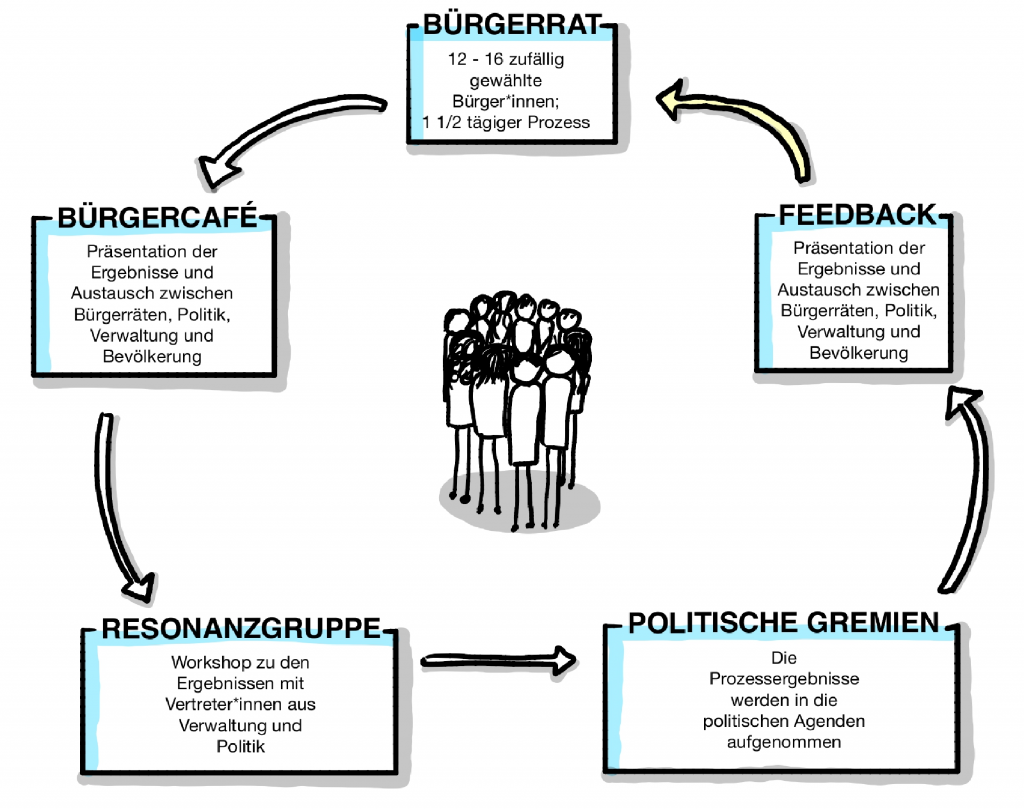Die Bürgerinnen und Bürger beteiligen
Die baden-württembergische Landesregierung meint es ernst mit mehr Demokratie und Bürgerbeteiligung. Im JRahmen der Politik des Gehörtwerdens von Ministerpräsident Winfried Kretschamnn wurde 2011 das Amt der Staatsrätin für Zivilgesellschaft und Bürgerbeteiligung geschaffen. Staatsrätin Gisela Erler ist Mitglied im Kabinett und hat als solche die Anliegen der Zivilgesellschaft und die Stärkung der Bürgerbeteiligung im Blick.
ffffffff
fffffffffffffffffffffffffffffffffffffffffffffffffffffffffffffffffffffffffffffffffffffffffffffffffffffffffffffffffff
Erfolgsmodell Zufallsbürger
Was ist eine Bürgerbeteiligung mit Zufallsauswahl? Wie werden die Bürgerinnen und Bürger ausgelost? Und worin liegt der Vorteil dieser Methode? In dem Erklärvideo des Staatsministeriums Baden-Württemberg wird anschaulich und mit Beispielen dargelegt, wie dieses bewährte Verfahren funktioniert und warum das Land bei vielen Beteiligungsprojekten auf Zufallsbürger setzt.
Gemeinsam Beteiligungsprozesse entwickeln
Was ist eine Bürgerbeteiligung mit Zufallsauswahl? Wie werden die Bürgerinnen und Bürger ausgelost? Und worin liegt der Vorteil dieser Methode? In dem Erklärvideo des Staatsministeriums Baden-Württemberg wird anschaulich und mit Beispielen dargelegt, wie dieses bewährte Verfahren funktioniert und warum das Land bei vielen Beteiligungsprojekten auf Zufallsbürger setzt.
Gemeinsam einen Fahrplan aufstellen
Was ist eine Bürgerbeteiligung mit Zufallsauswahl? Wie werden die Bürgerinnen und Bürger ausgelost? Und worin liegt der Vorteil dieser Methode? In dem Erklärvideo des Staatsministeriums Baden-Württemberg wird anschaulich und mit Beispielen dargelegt, wie dieses bewährte Verfahren funktioniert und warum das Land bei vielen Beteiligungsprojekten auf Zufallsbürger setzt.
Who is invited to a Citizen Council?
Citizens of a town or region are randomly selected from the register of residents. They are to work together for one and a half days on a joint declaration. To ensure that the make-up of the council reflects the area from which it is drawn, criteria such as age, gender and place of residence are taken into account in the selection process. Due to random selection, the participants are people with everyday knowledge who have no special knowledge nor previous qualifications. In particular, this means that they do not represent an interest group, but only their own opinions.
How does a Citizen Council work?
The participants of the Citizen Council, usually twelve to fifteen people, are invited to discuss certain topics and questions, to point out challenges from their perspective and to develop ideas for solutions. The Citizen Council’s work is not directed nor controlled in any way; it is moderated using a solution-oriented method called “Dynamic Facilitation“ designed to support co-creation.
Public presentation in the Citizen Café
At the end of a Citizen Council, a joint statement supported by all participants is drawn up. A few days later the Council presents their statement to the interested public through a “Citizen Café” where contact persons from administration, local government, politics and relevant institutions are also present. After the initial presentation, a World Cafe process allows everyone in the audience to reflect and respond to the statement.
What happens with the results?
During or shortly after the Citizen Café, a “Responder Group” is formed. This strategy group includes representatives from politics and administration in addition to one or two members from the Council. This group examines how the proposals can be concretely implemented and what measures need to be taken. Subsequently, the participants of the Citizen Council receive written feedback on how their results are being used.
Prozessablauf:
